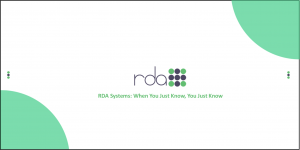Much is said these days about the keys to organizational success. Be it employee experience or learning effective communication, there are multiple factors involved in running a successful organization.
But like it or not, there is one need that all organizations have in common: financial well-being is essential for any organization to achieve its mission. Thus, the treasury department of an organization plays a vital role in its success and continued operation.
Over the years, this role has evolved and shifted. Today, treasury management services rely on treasury technology to optimize their every function.
In this article, we’ll examine how treasury management technology has evolved over the past 50 years, and how your organization can both adapt to and adopt the benefits of these developments.
What is Treasury Management?
Before examining the evolution of treasury technology, let’s pause a moment to understand treasury management by way of comparison. What is treasury management and how does it differ from financial management?
Whereas financial management focuses on achieving an organization’s overarching financial objectives, treasury management focuses on how to manage the cash and funds that belong to the organization. Put another way, financial management focuses on long-term goals and strategic investments, while treasury management focuses on an organization’s short-term, day-to-day operations and financial activity.
For smaller organizations, treasury management may only require a simple setup with online banking services and Bill Pay. As organizations grow and become more complex, however, the role of treasury management can expand to include any (or all) of the following:
- Cash management
- Risk management
- Cash flow forecasting
- Bank reconciliation
- Loans and borrowings
- Foreign exchange
- Taxes
- Collections
- Disbursement
- Information reporting
- Capital management
- Payments and payroll
- Finding and investing in new revenue streams
- Identifying bottlenecks
- Creating financial plans and policies
- Improving supply chains
- Optimizing cash conversion cycles
- Driving revenue growth
Done correctly, treasury management can improve your organization’s time efficiency, save costs on all fronts, increase cash visibility, enhance forecasting abilities, protect against fraud, and boost productivity. With the right treasury management technology in place, an organization can maximize each of these benefits.
The Evolution of Treasury Management Technology
Treasury management technology solution companies have long sought to develop products that will enable treasury departments to seamlessly perform their various functions.
Some fintech treasury technologies focus on cash management while others aid bank integration, provide forecasting capabilities, or aggregate data. Because each treasury technology product offers different solutions, it is important to know your organization’s needs before selecting the tools you will use.
It is easier to understand today’s treasury technologies by observing how we have gotten to this point—where we began and how we have developed and adapted certain technologies to fit the needs of treasury departments.
The Treasury Technology Timeline
Swift Network (1970s)
The creation of the SWIFT network provided the first global structure for processing financial transactions and international payments. This was the first coordinated step toward developing treasury technologies that would aid daily financial operations.
Spreadsheets (1980s)
With the rise of the personal computer in the 1980s, spreadsheets began to replace the need to manage cash flow by hand on physical ledgers and books. It provided accountants and others working in the treasury department an efficient way to record data, make calculations, and produce financial reports all with one spreadsheet.
While spreadsheets automate some data management, they still require high levels of manual processing to organize the data and produce the kind of insights treasury departments require to forecast, manage, report, and plan. Manual data entry also lends itself to human error and makes it difficult to know who has the most up-to-date information.
Spreadsheets also do little to increase cash visibility. Data must be downloaded from individual bank portals and then entered into the spreadsheet before it can be analyzed and utilized. So, though a significant step forward compared to doing treasury management by hand, the use of spreadsheets has declined over the years as vendors have developed other treasury technologies.
TMS (mid-1980s) and ERP (1990s)
Treasury Management Systems (TMS) and Enterprise Resource Planning (ERPs) came about in the 1980s and 90s to provide integrated computer systems that could manage all company operations. However, these systems can be expensive and complex to maintain, which has excluded many Small and Medium Enterprises (SMEs) from being able to use them in the first place.
But most importantly, these systems often cannot perform the complex functions required by treasury departments (i.e., risk management and cash forecasting) which has also contributed to lower rates of adoption.
RPA (2000s)
Robotic Process Automation (RPAs) frees up time by running specific tasks that require little to no human involvement. RPA is best for repetitive tasks such as data gathering or payment processing. It eliminates time-consuming efforts for employees who can focus on higher-level tasks. RPA robots reduce the need for manual data entry, which both eliminates the element of human error and provides data in real time, 24/7.
However, RPA has its limitations. These robots do not possess human-level intelligence, which means they cannot identify bugs or other faults in operations, or process complex functions. They still require human oversight.
Cloud (late 2000s)
Cloud services have also played a role in the evolution of treasury management. When data is stored in the cloud, employees can access data remotely, increasing opportunities to collaborate and enabling real-time data and communication. This improves forecasting abilities due to more accurate and up-to-date data.
Cloud services also have the capacity to sync bank data, improving global cash visibility. They can do all this without risk of data theft thanks to firewalls and encryption. Plus, it is often more affordable to manage treasuries in the cloud compared to expensive in-house Treasury Management Systems.
API (Mid-2010s)
Application Program Interface (APIs) is a software that enables different applications to work with each other. In treasury management, APIs act as a door connecting banks to other treasury technologies that allow you to gather information in real-time, ensuring reports are using the latest data to plan and forecast.
APIs are easy to integrate, quickly eliminating batch-processing, reducing interest debts, and detecting fraudulent payments. Banks have become more open to allowing APIs to connect directly to bank portals in recent years, making this technology even more attractive. When paired with an automated cash management system, APIs can be a powerful tool for treasury departments looking to consolidate bank data.
AI (late 2010s)
Artificial Intelligence is an exciting development in treasury technologies because it allows for human-level analysis at automated speeds. Self-learning AI algorithms can identify patterns and anomalies and guide treasury management decisions. AI can take over complex processes, track fraudulent activities, integrate with other systems, collect and analyze information, and even learn from past behavior to make improvements.
There are limitations to using AI, though. It takes time to incorporate into existing treasury functions. Because it looks at historical data to forecast the future, it will take time to accumulate the amount of reliable data the system needs to operate. Even so, when it is operational, AI can produce cash flow forecasting that is highly accurate, help treasury departments make complex decisions, and so much more. The possibilities are almost endless.
What Are Your Treasury Management Needs?
Not all organizations have the same treasury needs. If your treasury department only performs the basic roles of cash management and financial planning, you may not need treasury technology with all the bells and whistles.
However, the development of new technologies over the past decades has meant that even SMEs have easy and affordable access to many of the treasury technologies they need to gather data, achieve global cash visibility, forecast, plan, manage cash flow, and make investment and borrowing decisions.
Today, it’s not a matter of choosing between these different tools, it’s finding a combination of the ones you need that will solve the problems your organization faces. Work to identify your organization’s needs and you will quickly find the technology and tools you need to achieve your goals.






1 thought on “The Evolution of Treasury Management Technology”
Engaging read on treasury management tech evolution. Valuable insights into industry trends and innovations. Thanks for sharing this informative piece!